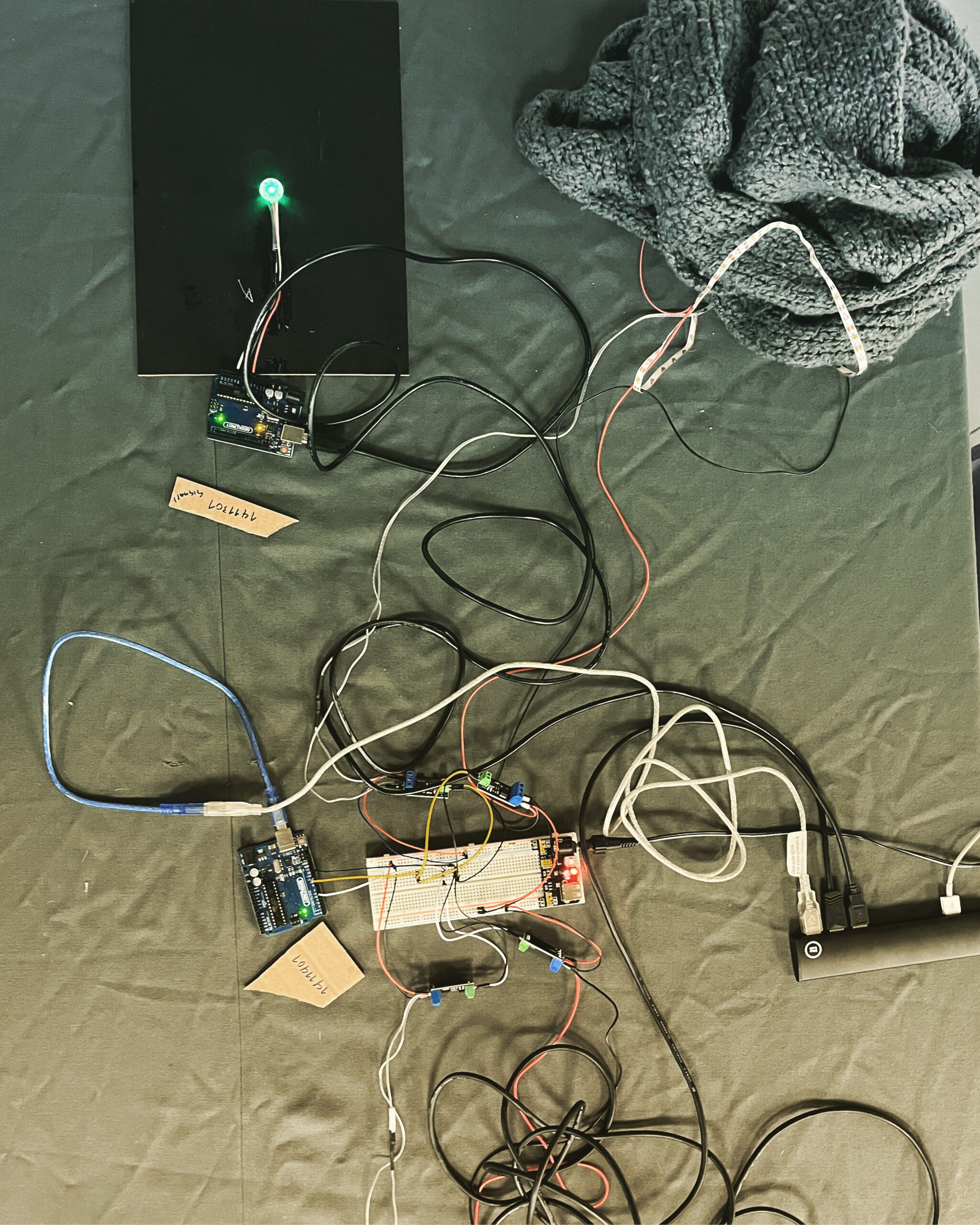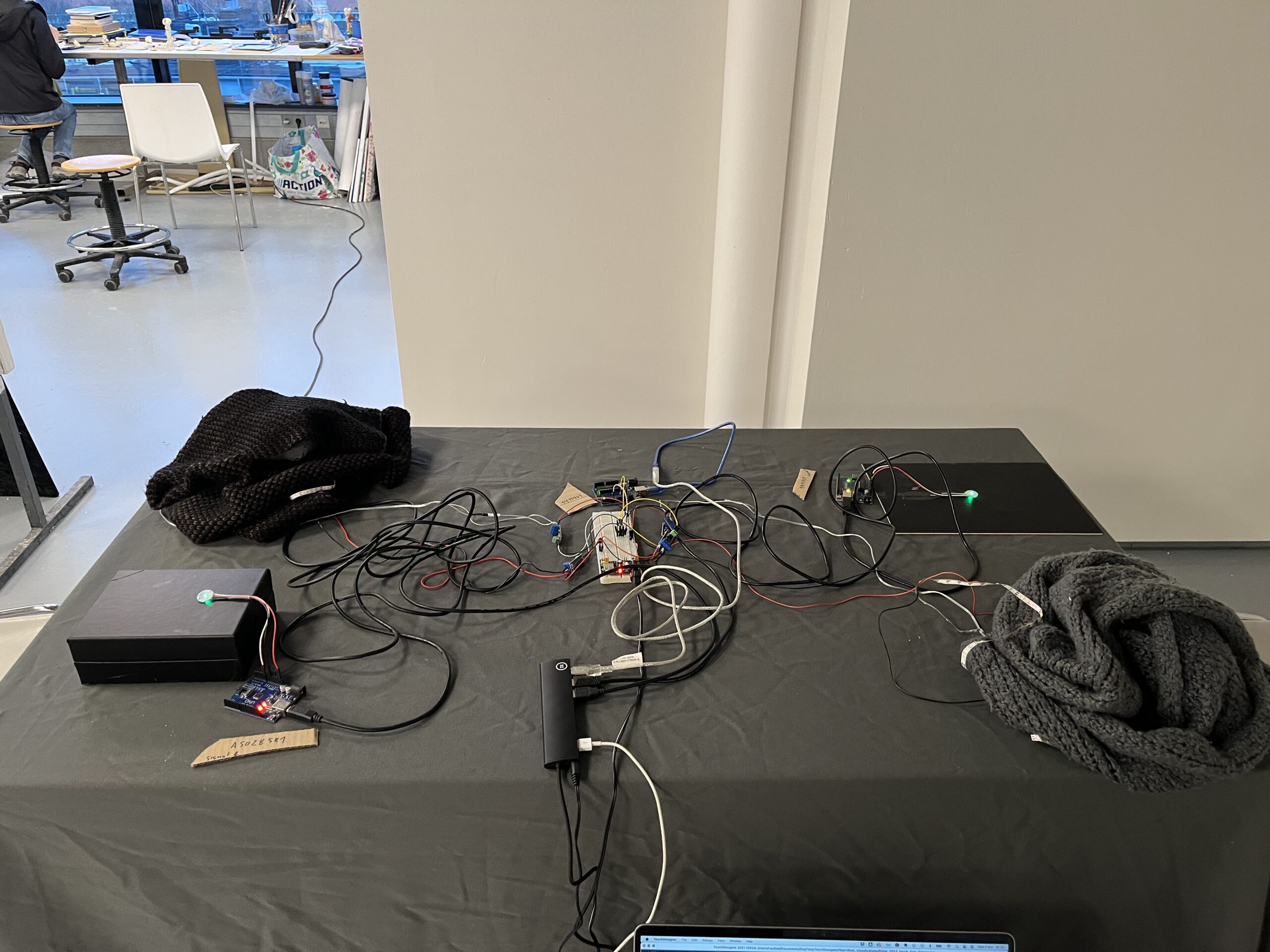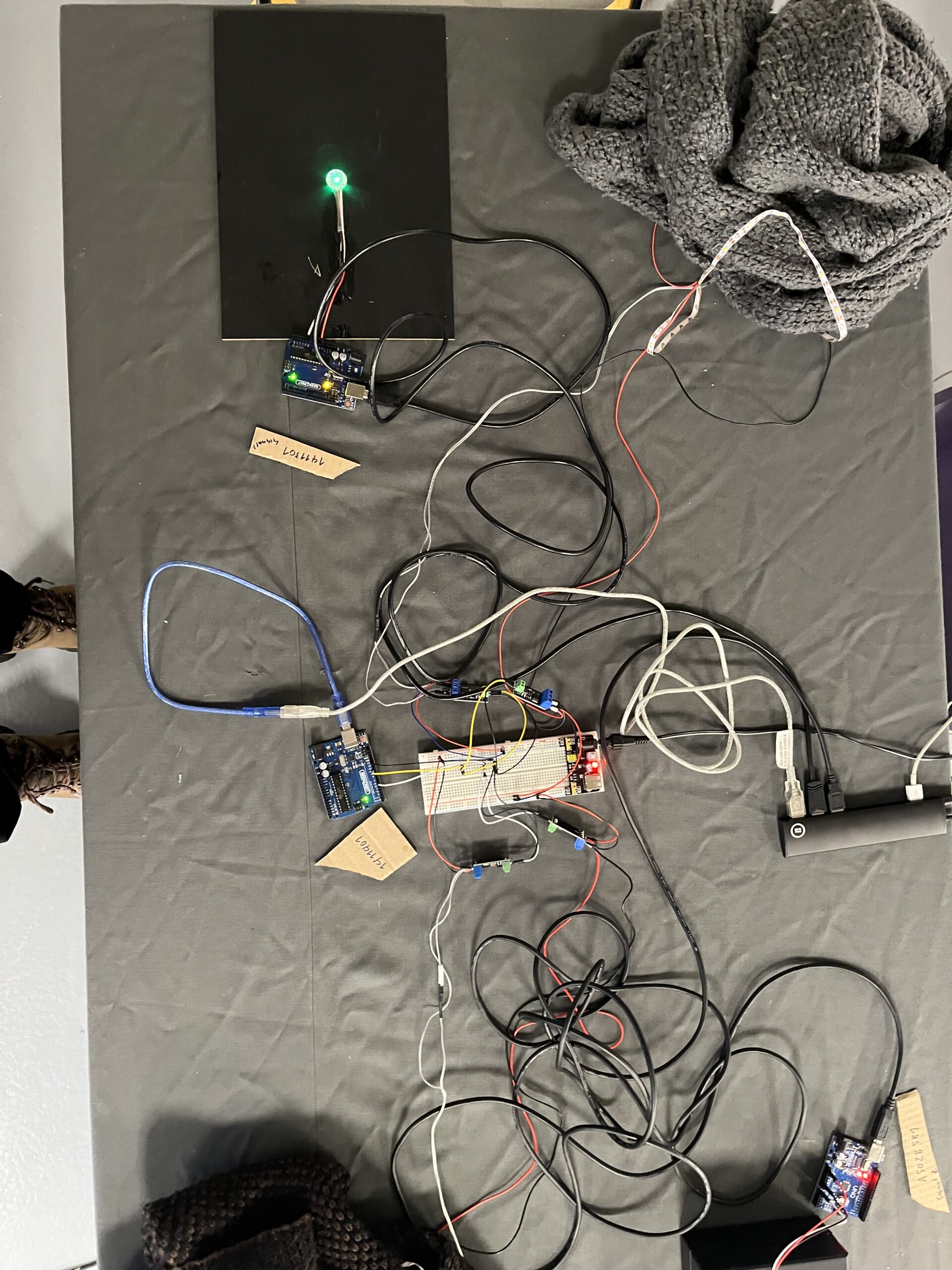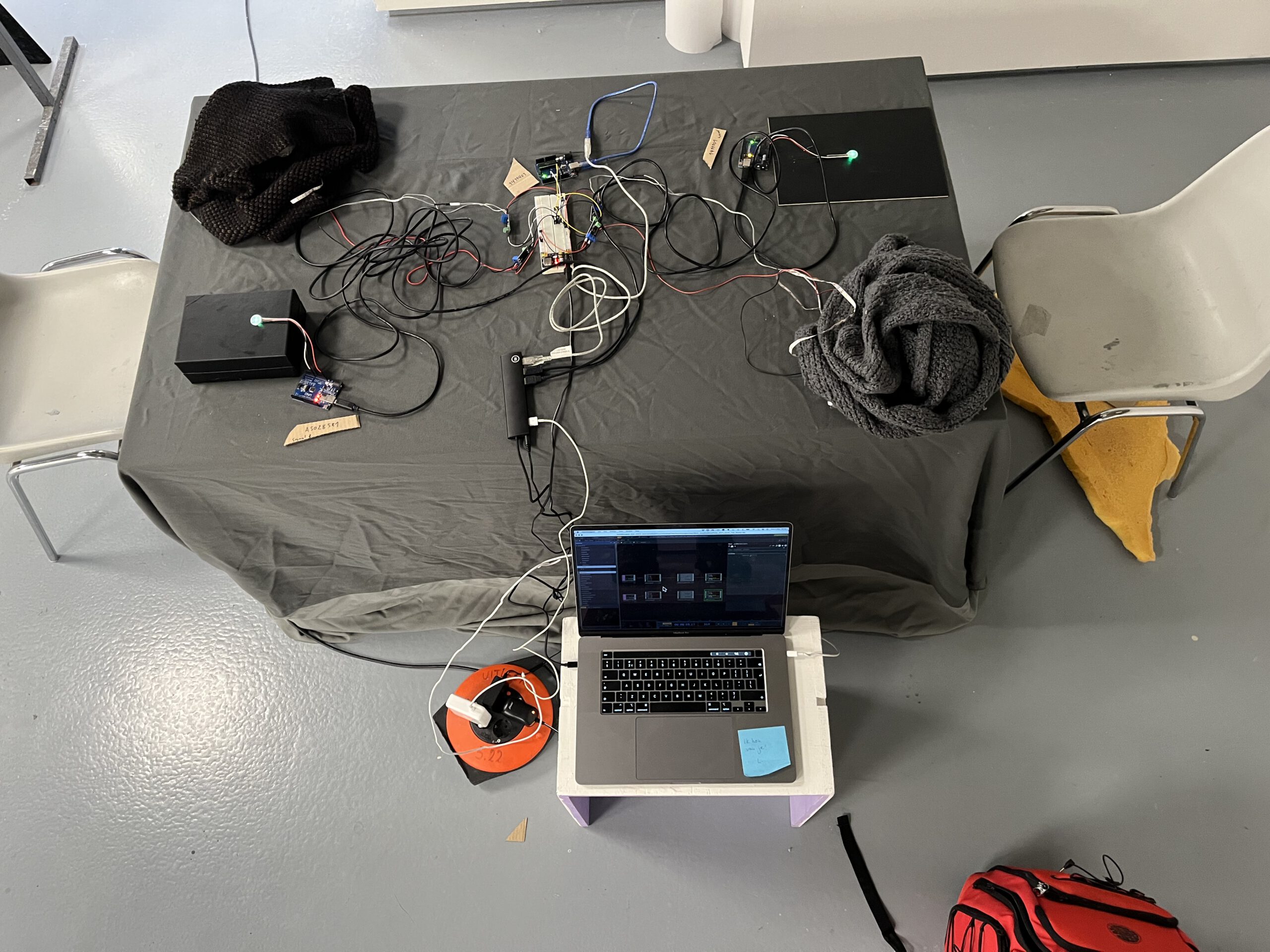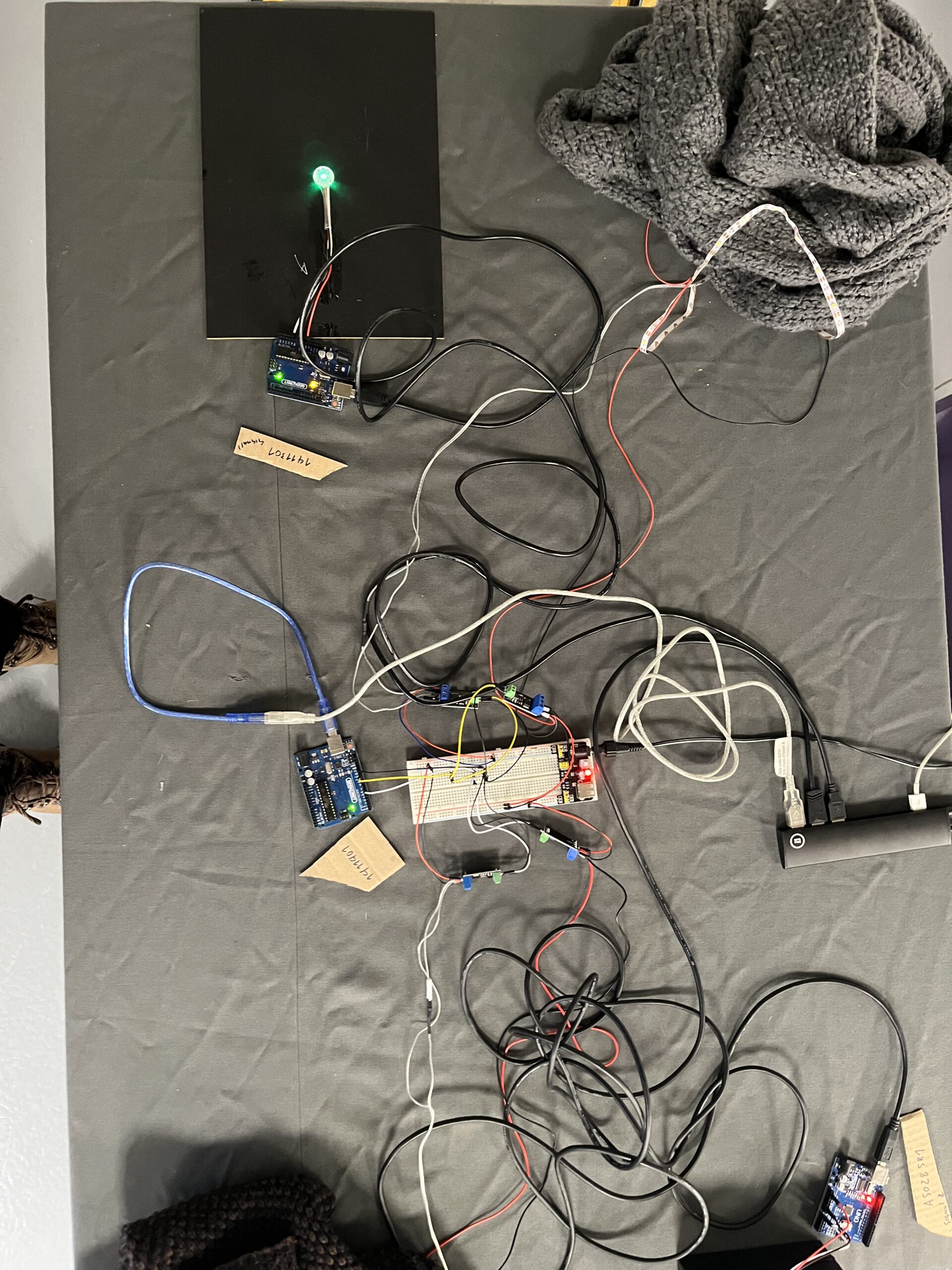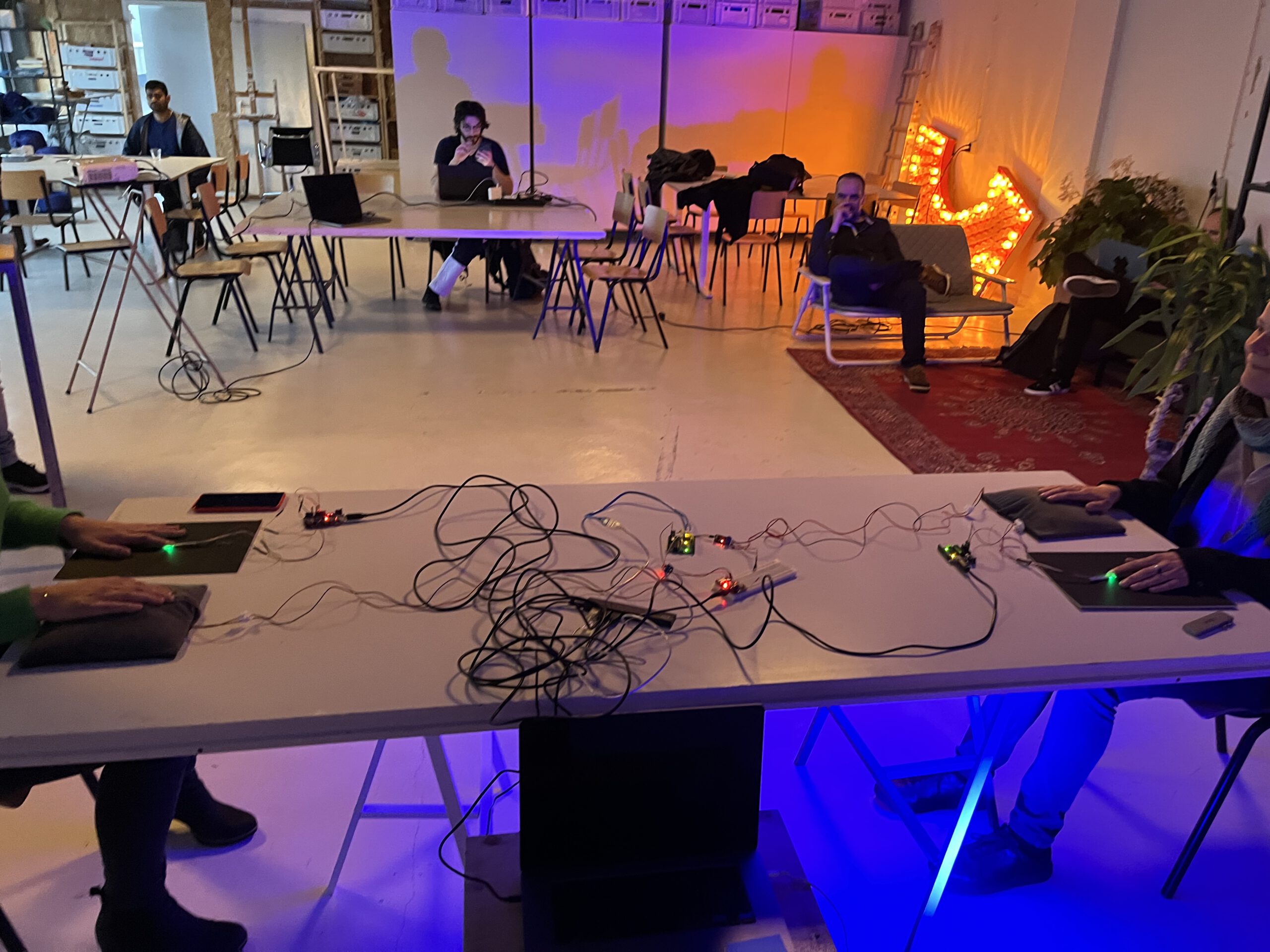Just be present
Digital Precense
Nowadays, biometrics are everywhere, from simple things like height in a passport to more sophisticated applications like facial recognition in crowd control.
One common denominator of the mainstream applications of biometrics is that they focus on differentiating individuals. In this sense, technology is used to separate us from each other.
What if we could use technology not just to differentiate us but to bring us closer together? This unique perspective sparked the idea for this project, using biometrics as a tool for connection, not separation.
The project draws inspiration from the works “The artist is present” by Maria Abramovic and “Pulse” by Rafael Lozabo
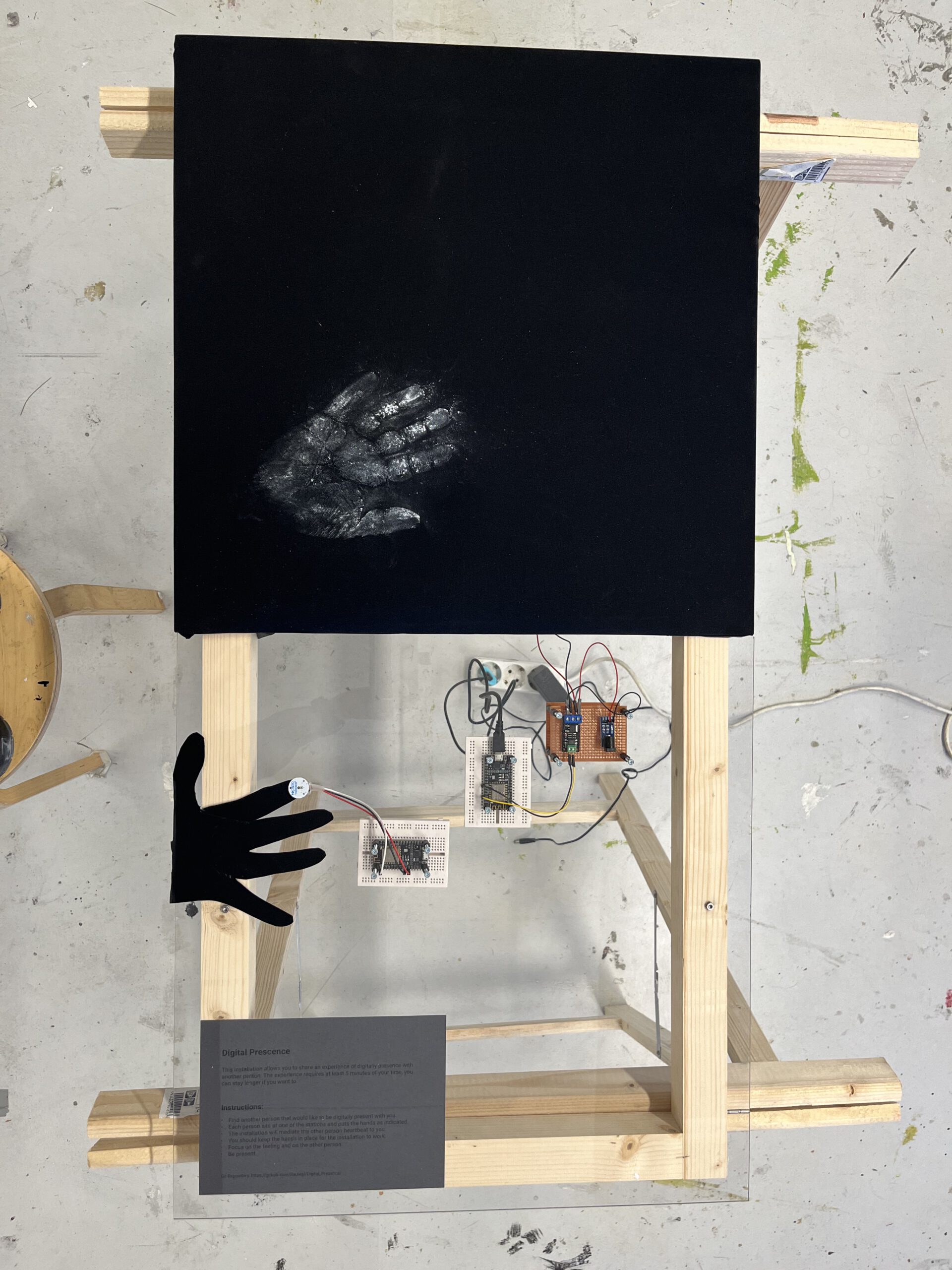
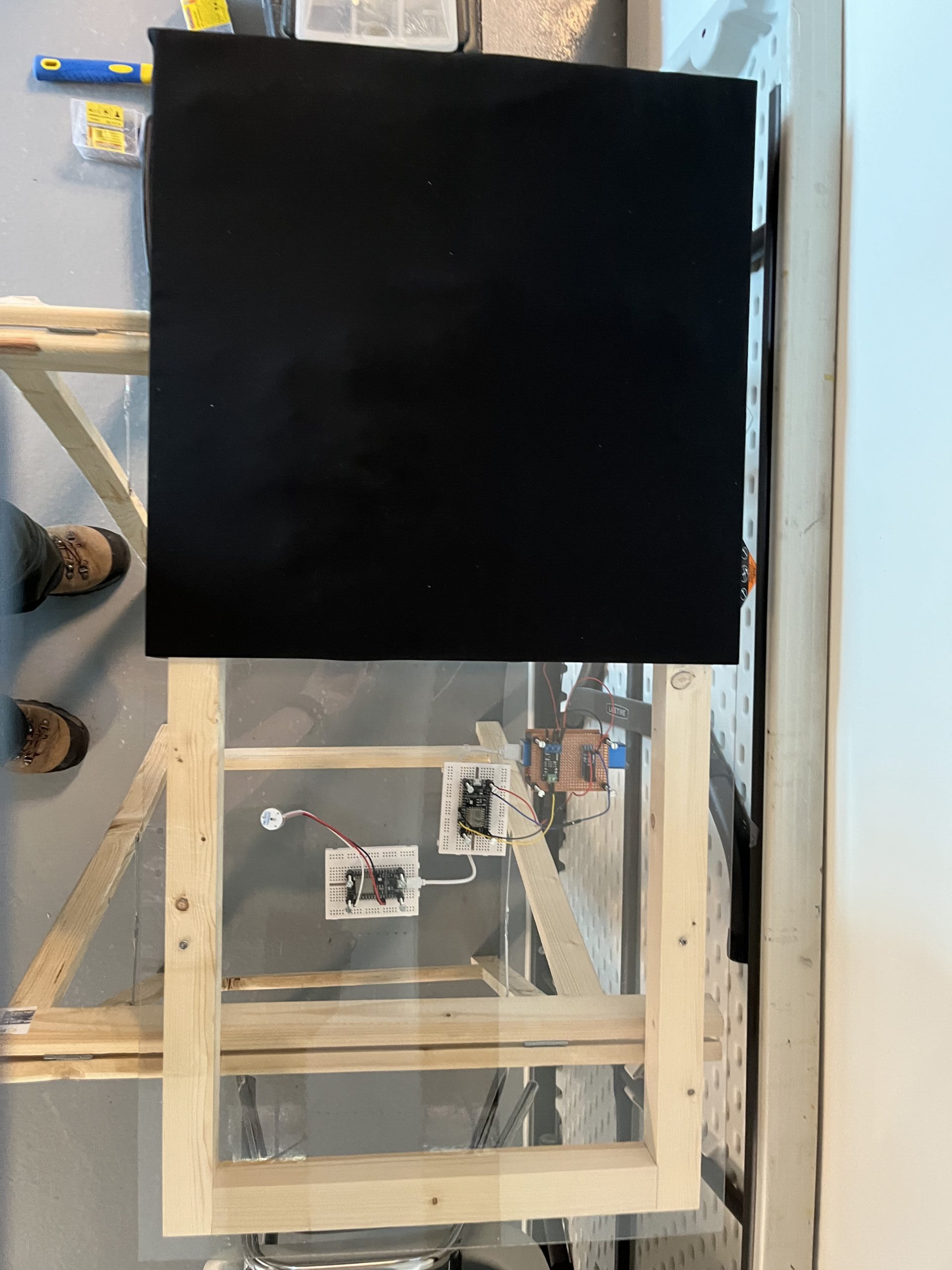
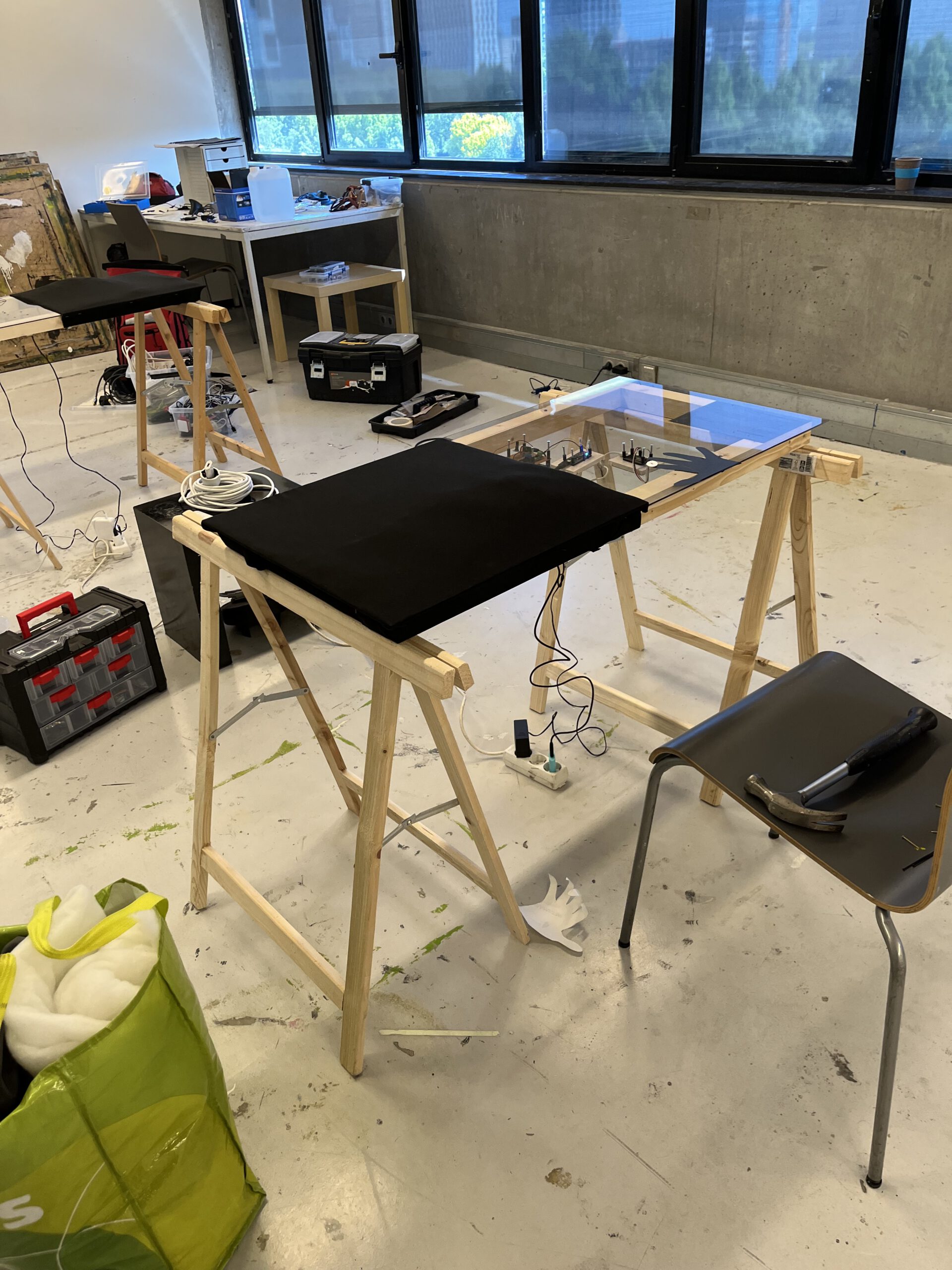
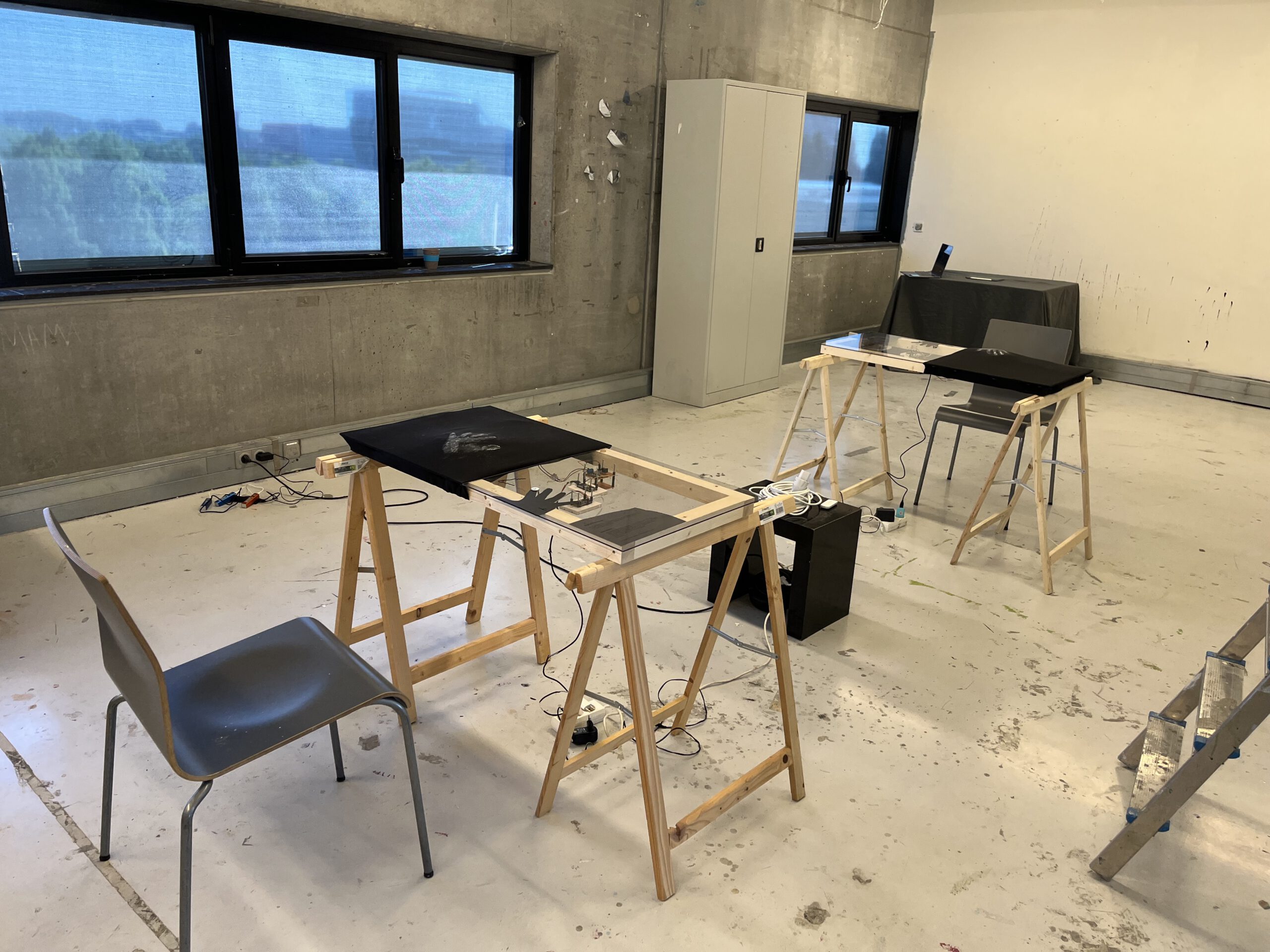
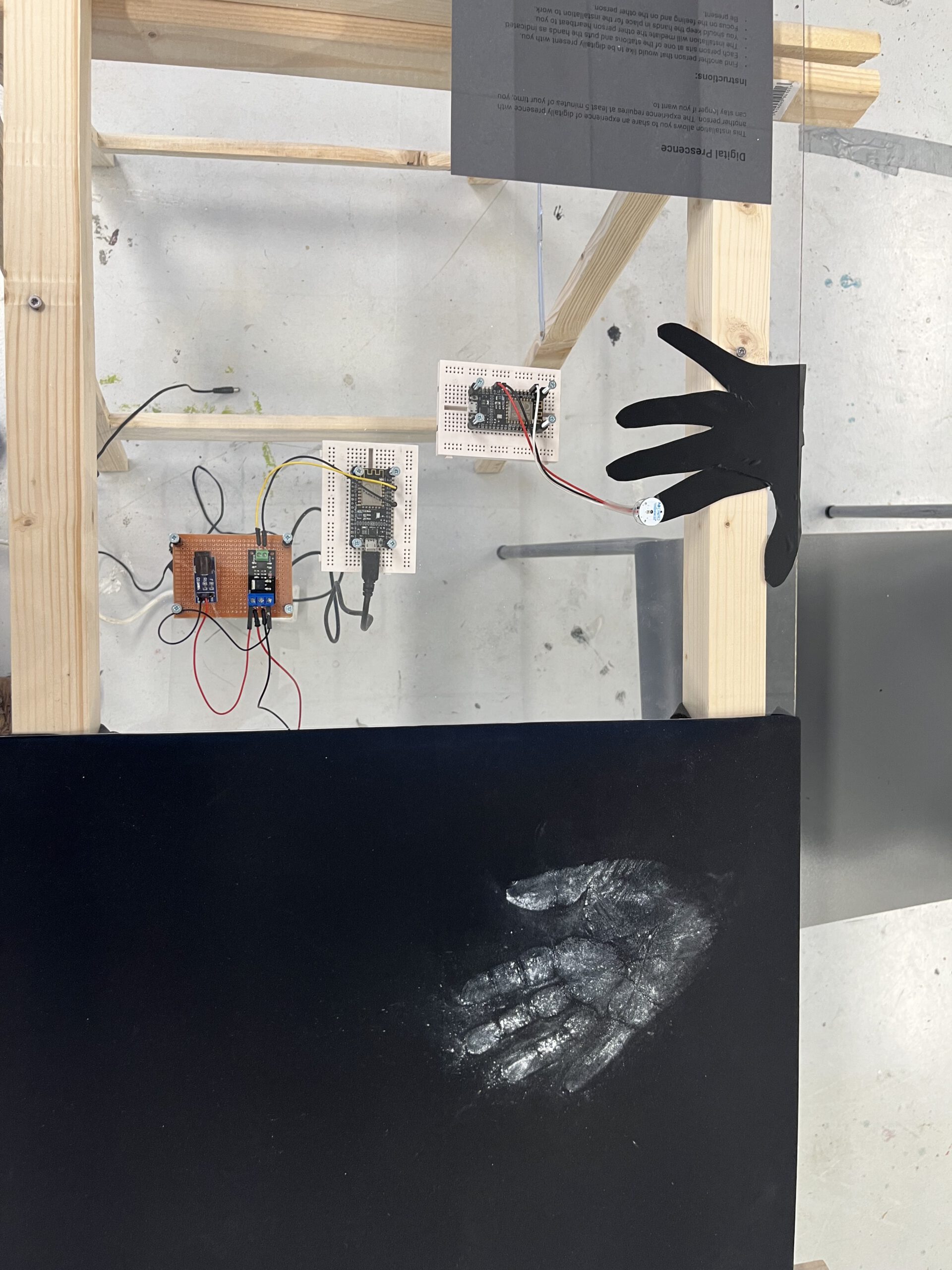
Interaction
In this version, the installation has two physically separated stations where visitors can feel each other’s heartbeats.
The installation works as follows: Two participants sit in front of each other and put their hands on the station. On the one hand, a hearth-beat sensor captures the hearth signals and sends them to the other station. On the other hand, a motor that vibrates to the rhythm of the heartbeat of the person on the other station.
Technical Specifications
The installation uses ESP8266 (NodeMCU) microcontrollers, heartbeat sensors and vibrating motors. Those are connected wirelessly using OSC communication. TouchDesigner is used to orchestrate the communication and process the heartbeat signals.
Process Documentation
I developed this concept and installation during the fourth year of the DogTime program at the Gerrit Rietveld Academy.
Files related to this work can be found in this Git repository.
Some challenges were:
- Visitors have strong preconceptions of how a heartbeat should be visualized, namely a beating shape. It required some investigation to make the visual concept and the overarching concept not fall into this mainstream preconception.
- The raw heart signals had a lot of noise. Moreover, when more sensors were connected to the same microcontroller, they would interfere with each other. One reason to move to wireless communication was to isolate each sensor to reduce noise and interference.
